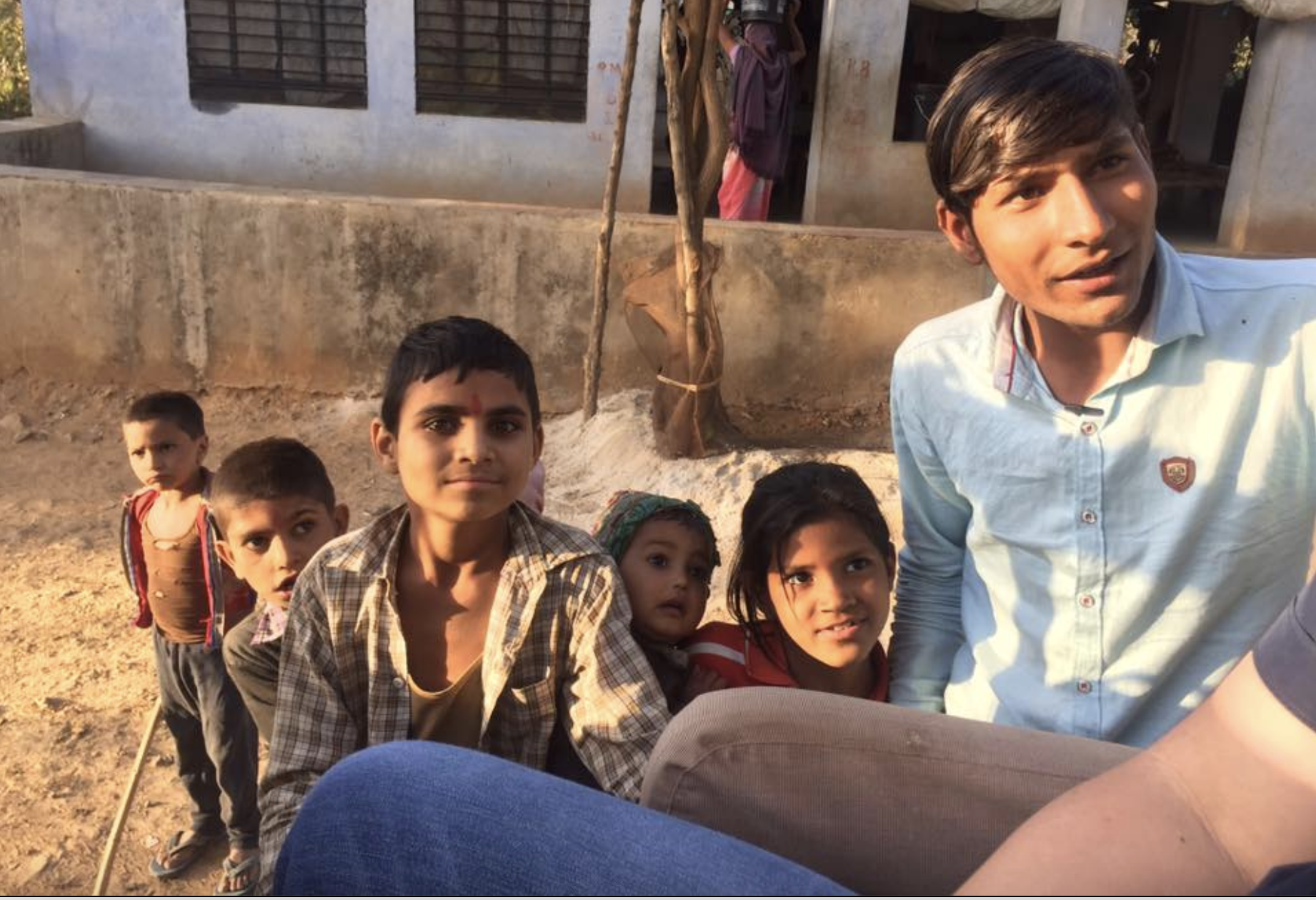We took one very special excursion here in Ajabgarh; one that stands out among all the cultural experiences we’ve had around the world.
Our guide drove us along a winding road that passed through many tiny villages. At each village, we were greeted by the townspeople — and in particular, the children. But unlike the larger villages we’ve seen, these residents didn’t just wave and smile . . . they literally came bounding into the road and swarmed our open-air jeep, lavishing greetings on us and pleading with us to take their photos. The braver ones assertively stuck out their hands for us to shake. One particularly confident young man insisted that we take a selfie — and I could tell he was proud of his proper usage of that term.

As we approached each town, hordes of people would come pouring out, shouting greetings excitedly. In some instances, children would run along behind our jeep . . . and in one case, a young man was so excited that he actually grabbed on to the car and “hitchhiked” with us for a short ride.
To anticipate a question, this resolutely was NOT about money — none of them were begging, and in fact we were told that it would be offensive to offer them money . . . as if it is necessary to “pay” for their hospitality. Our guide explained that until about 10 years ago, the people in these villages would *never* have the occasion to see anyone from another area of India, let alone a foreigner. We were like deities descended from the skies. We were really overwhelmed by this; it was quite touching.
But that was not all: Afterwards, our guide brought us into his home, where he introduced us to his wife, his four children, and the many other children visiting from neighbor’s homes. By local standards, he is a very successful man — he has a multi-story home (almost unheard of here) with stunning views of the surrounding valley, as well as two cows, three goats, and two water buffaloes. His wife prepared masala chai for us, which was served by his eldest daughter.

We were gratified by his hospitality, but even more so by the conversation. He explained the local marriage practices in which people always marry outside the village, and when daughters marry, they move to the village of their new husband. We talked extensively about India’s caste system, and about his own caste and its impact on his life. He shared that his was an arranged marriage, and that he did not see his wife’s face until AFTER the marriage (she kept it covered during the ceremony), and he spoke his expectation that the marriages of all four of his children would likewise be arranged.
I told him that he has what people the world over want: A loving family, a stable home, and a rewarding career. We agreed that his is a good life. It was such an honor to be brought into his home.

